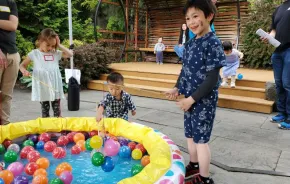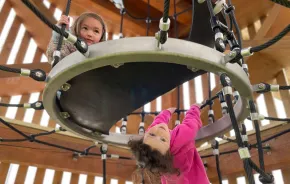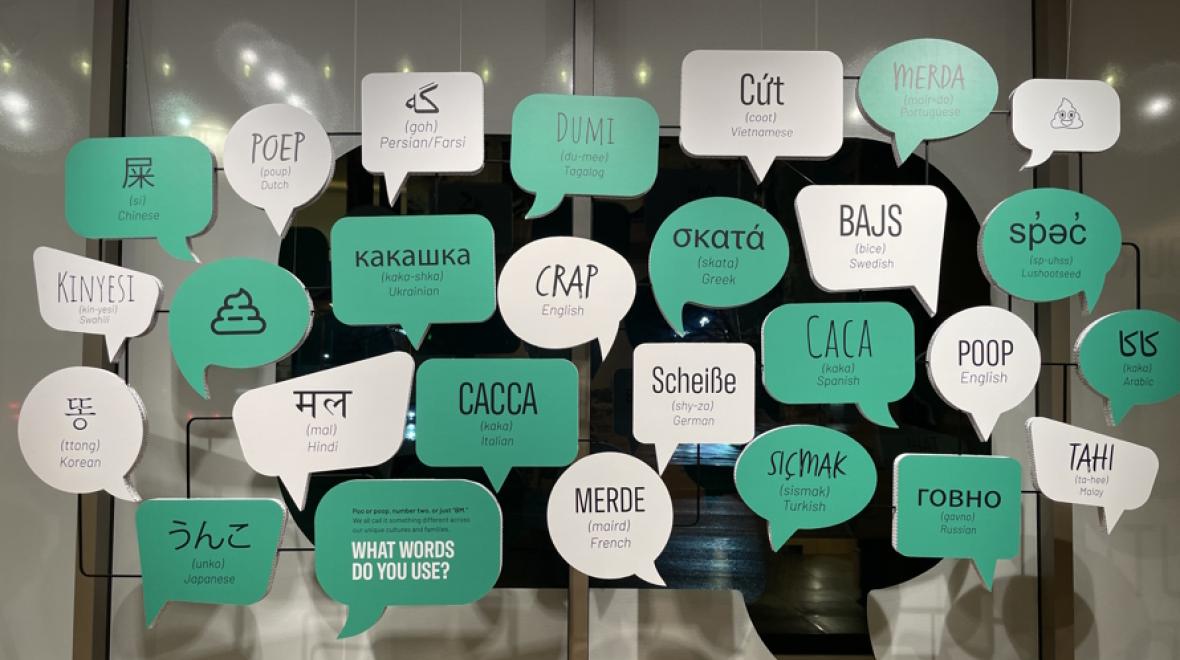
Photo:
No matter how you say it, everybody does it. Photo credit: Kari Hanson
I’ll admit it: sanitation is not an issue I often think about, and I recognize the incredible privilege in that. Toilets are available when and where I need them, and everything seems to magically disappear with a flush. But for 3.5 billion people around the globe (half the world’s population), sanitation is a daily struggle. And let’s be real — nothing magically disappears.
The new exhibition at the Bill and Melinda Gates Discovery Center, “A Better Way to Go: Toilets and the Future of Sanitation,” looks at the challenges of our current sanitation system and offers inspiring ideas for a better future.
The current sanitation system
The exhibition starts by examining the challenges of the current sanitation situation. Even for those of us lucky enough to live in a community with a functioning sanitation system, many problems are lurking just below the surface. Aging infrastructure, giant clogs from people flushing all kinds of things down the toilet and overflows from flooding (growing worse as our climate changes) are just some of the problems.
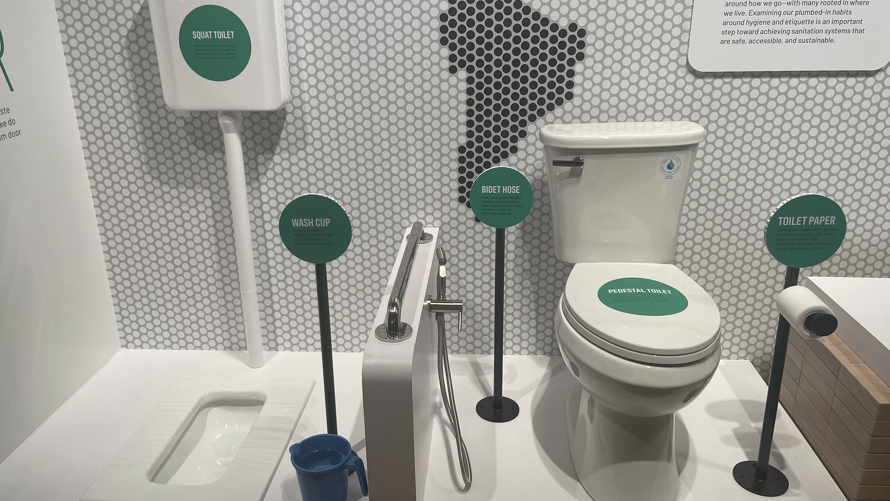
Another unsustainable aspect of our current sanitation system is the enormous amount of water it requires. Did you know that the average person in the US uses 77 gallons of water per week on toilet flushes? A powerful overhead display of water jugs puts this number into perspective.
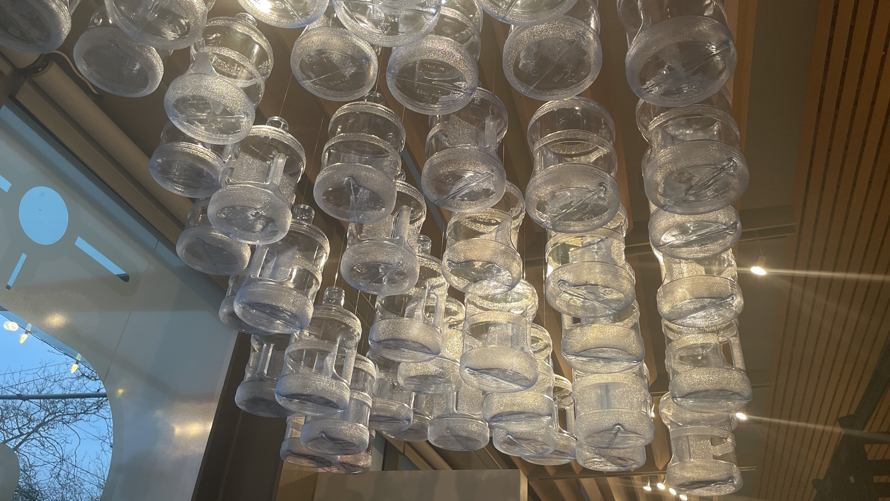
Poop!
Much to the delight of giggling preschoolers everywhere, you can’t have an exhibit about toilets without taking about poop. One display provides the Bristol Stool Scale and asks visitors to think about what their last poop looked like, and what it can reveal about your health. And never fear, there is a helpful display of all seven poop types carved from wood. (Can poop be beautiful? If so, this comes pretty close.) Just gross enough to makes kids squirm, and interesting enough to make you stop and think.
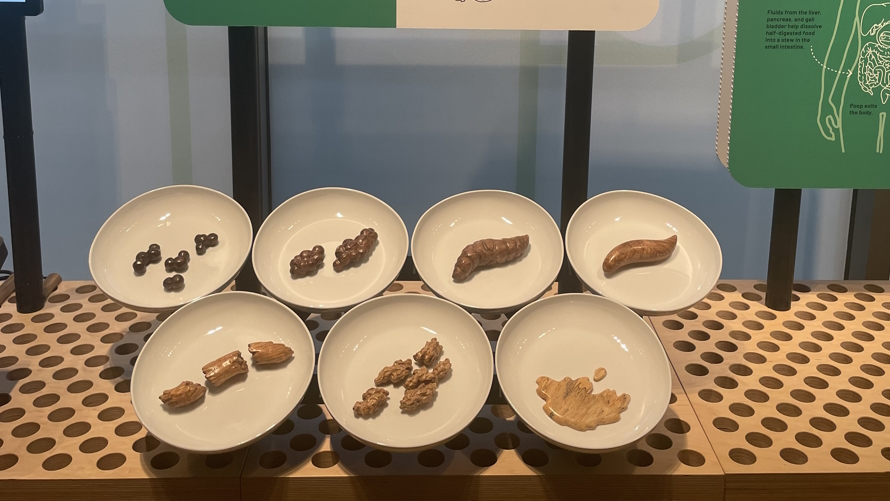
As you move through the exhibit you’ll come to a wall of hanging glass terrariums filled with soil and a variety of happily growing plants. The soil is fertilized with processed biosolids (aka – poop), which can be used to grow crops and nourish landscapes.
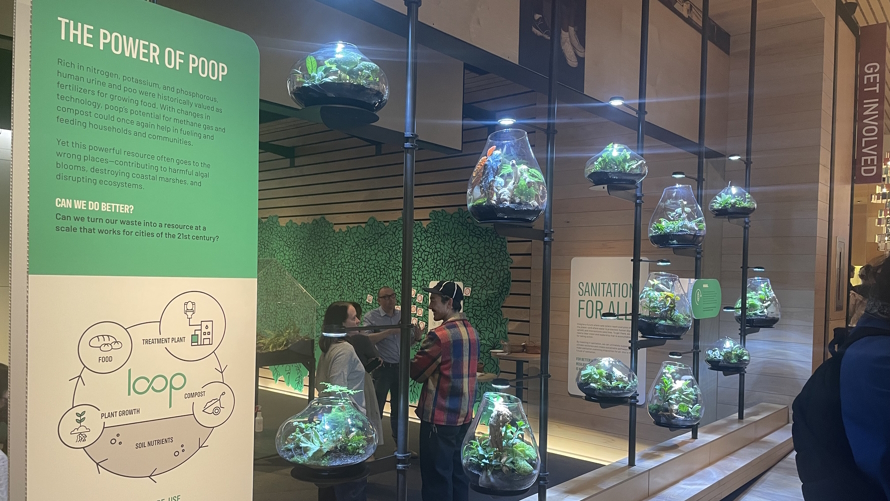
Finally, a silver tray displayed a handful of small pellets that looked like barkdust. These dried flakes were the final result of an innovative new toilet that reduces poop to pellets that can be composted, used as fertilizer or thrown out in the trash.
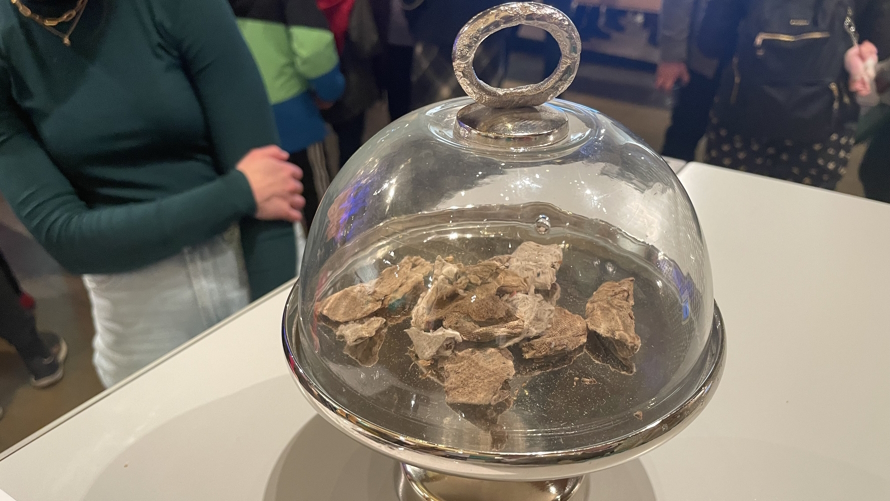
Innovative new technologies
So what’s the solution to the global sanitation crisis? The exhibition has several options on display, from the SaTo Pan (a trap door that snaps shut after use to keep odors down in pit toilets) to Loowatt toilets (which seal waste in a biodegradable film and ultimately use biogas to let users charge their cell phones). The one I found most impressive is the G2RT (Generation 2 Redesigned Toilet).
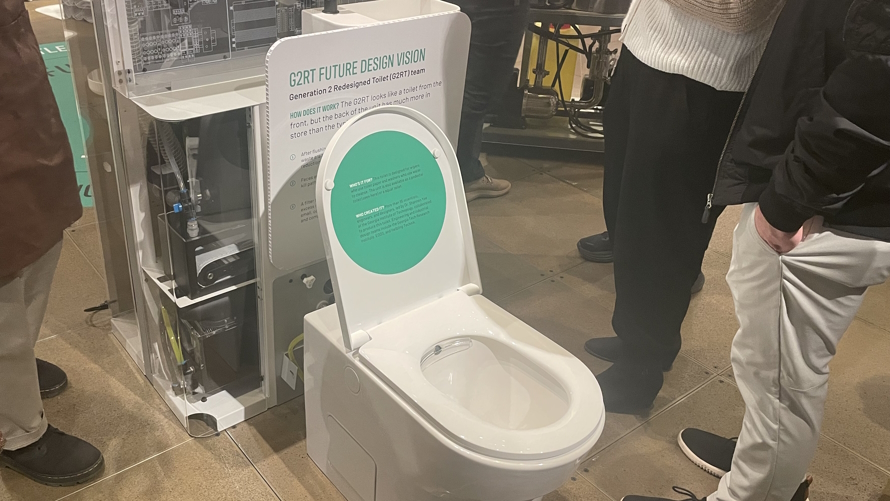
G2RT uses a gentle vacuum to separate liquid and solid waste, ultimately recycling the liquid to be used as water for flushes (or for washing your hands in the attached small sink bowl). Solid waste is completely dehydrated and deposited into a small canister. For a family of 6, the solid waste (which is order-free and safe after being pasteurized to kill all pathogens) would need to be emptied once a week. This technology is still being developed, but hopefully will ultimately find its way into homes around the world. No underground sanitation system is required, simply plug the G2RT in and you’re ready to go (in all senses of the word).
Art installation
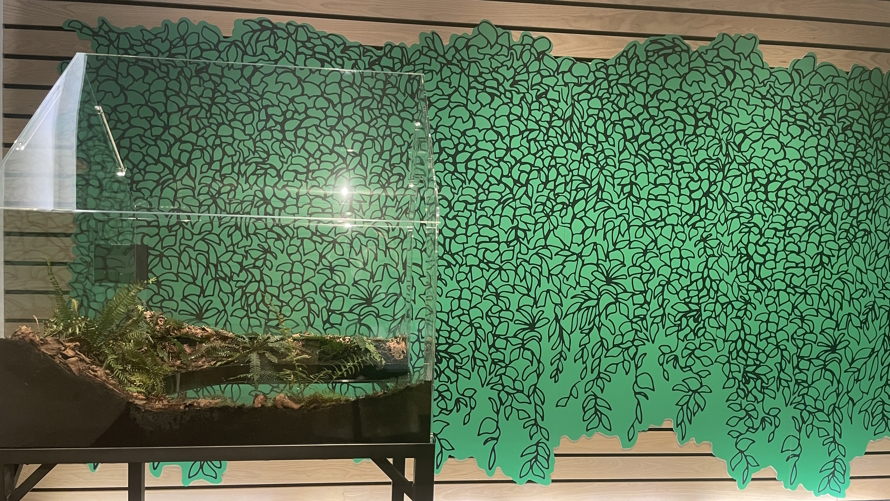
Visitors are invited to image a world where we have solved sanitation challenges in the “Sanitation Futures” space. “Village Green: Loopscapes,” is an art instillation composed of several garden-like spaces filled with living “poopariums” created by artist Vaughn Bell. The poopariums are constructed with hollow centers, allowing visitors to pop their heads inside for an immersive experience (there are stools for those who need a height boost, and one that is fully open on one side so it's ADA accessible). Each installation acts as a tiny greenhouse; the air is slightly warmer and sounds damped when you step inside. But don’t worry, there’s no stinky smell, just thriving plants and nutrient rich soil.
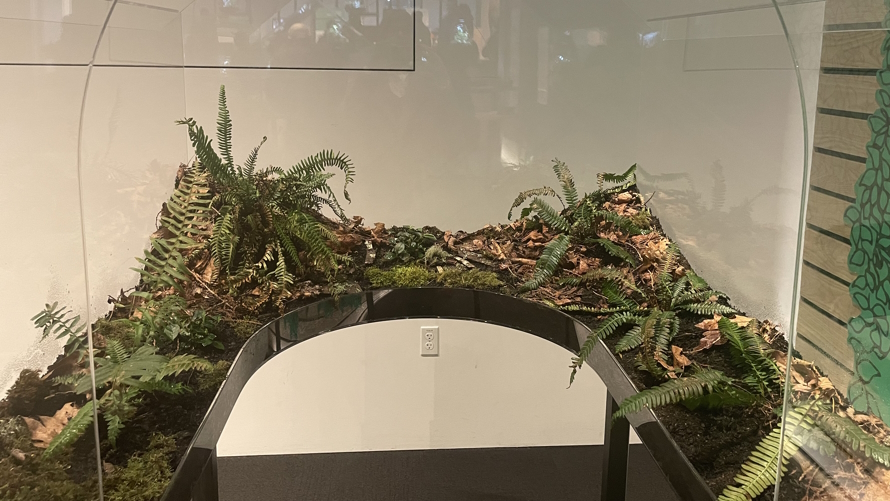
Plenty of interactive activities
In addition to the poopariums, there are several interactive aspects of the exhibition. One wall asks visitors to “recall a time you had no safe place to go. Take a card and share a word about how you felt.” Small cards and pencils are provided and answers can be placed on a large board. A wall in the art installation room asks people to write down their ideas about how to create a better sanitation future on a sticky note and place it up on the wall.
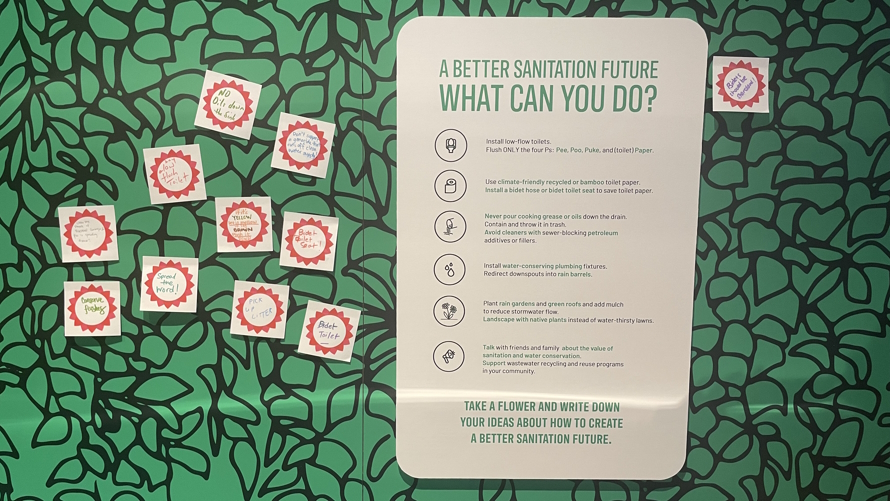
Perhaps the most engaging interactive aspect of the exhibit is the water bar. Guests are invited to take a tray with three small cups, fill each with water from a numbered jug and then guess where the water came from. (“Don’t worry, none of the water is from a toilet,” the water bartender reassured me.) Can you tell which water is from the tap, bottled or from a drinking foundation?
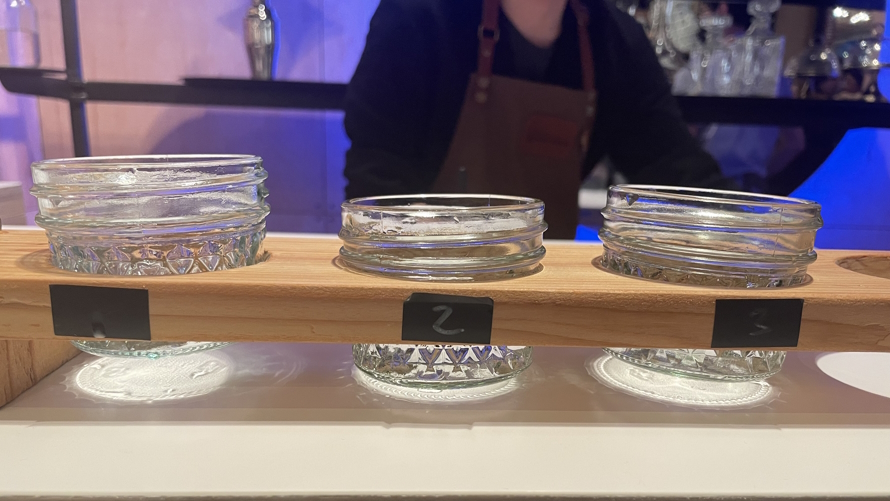
Leave inspired
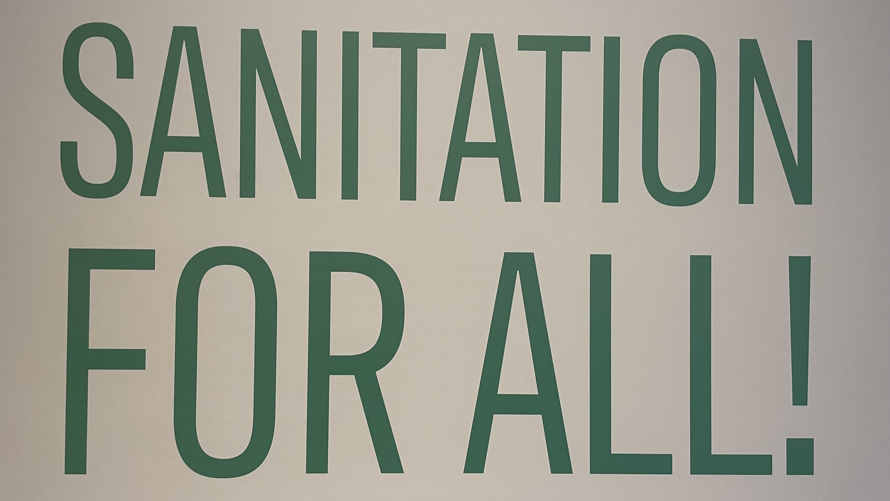
I left this exhibit feeling incredibly inspired about the future. When news headlines are dominated by wars, elections and scandals it can be hard to remember that there are people out there working to make the world a better place and solving big problems. Seeing these innovative inventions (and being lucky enough to hear from their developers) was a reminder that humans are amazing, and we can make our world a better place for everyone. Who knew I’d leave an exhibit about toilets filled with so much hope and inspiration!
Take the whole family to this inspiring and thought-provoking exhibit today, and leave dreaming about a better, cleaner tomorrow.
If you go…Where: Bill and Melinda Gates Foundation Discovery Center, 440 Fifth Ave. N., Seattle. Located near the corner of 5th Avenue North and Harrison Street, across from Seattle Center, about a mile north of downtown Seattle. When: Open Wednesday–Saturday, 10 a.m.–5 p.m.; “A Better Way to Go: Toilets and the Future of Sanitation” opens Feb. 28, 2024. Cost: Admission is free. Parking: The closest parking lot is the Seattle Center 5th Avenue N. Garage. There are other parking garages nearby and the area is served by several bus lines. See the website for more details. |










